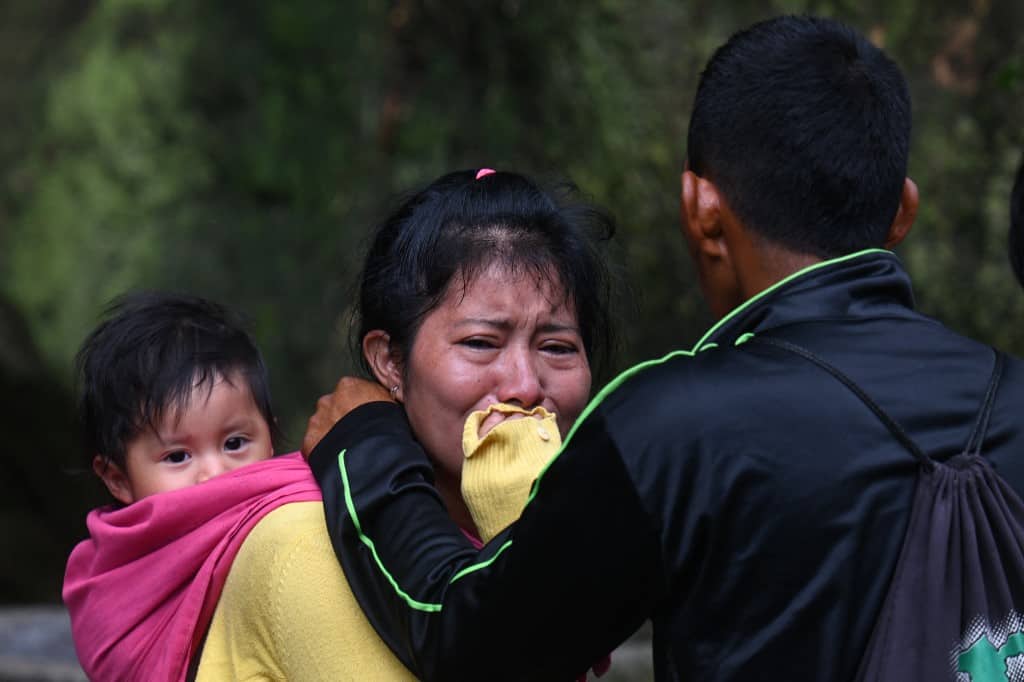At least six people died and another 13 are missing after a river overflowed due to heavy rains, sweeping away six homes in the center of Guatemala’s capital.
“Six bodies have been located (…) there are two minors, and the rest are adults,” Walter Monroy, deputy secretary of the Disaster Reduction Coordinator (Conred), told journalists. The civil protection official said 13 people remain missing.
The event occurred early Monday morning when a strong swelling of the El Naranjo River destroyed homes in the Dios Es Fiel settlement, located below a vehicular bridge.
The current caused by the rains swept stones, trees, earth and debris and wiped out the precarious homes in the area, built mostly of corrugated zinc. Monroy said the flood came after an “impoundment” of water due to landslides upstream of the basin.
Hundreds of firefighters, police, military, neighbors and volunteers are participating in the rescue in the affected community and along the river’s path, Conred added. The agency in an initial report had reported 18 missing.
Prior to this tragedy, the current rainy season in the country, which runs from May to November, had left 29 dead, 2.1 million affected, 10,303 evacuated and four roads and nine bridges destroyed, among other damage.
Much of the wastewater from homes in the capital ends up in the overflowing river, on whose banks thousands of underprivileged inhabitants have built constructions although it is prohibited by the authorities.
Everything disappeared
Esaú González, 42, an inhabitant of the affected area, was trying to assimilate the tragedy he is experiencing along with his neighbors and cannot get over how they lost everything due to the water current.
“It was like a tornado, the river was powerful, then it passed by sweeping away several houses (…), the neighbors disappeared,” this Guatemalan, who says he has several trades to survive, said.
He lamented that poverty leads hundreds of families to live on hillsides. “Rent is very high, wages are not enough to cover rental expenses,” he complained.
Nearby, Mardoqueo Escalante, 35, was recovering after shoveling sand in search of his sister Josefina Escalante (23), who disappeared in the tragedy. Along with other neighbors, he supported the rescuers for moments as they combed the area with the help of trained dogs.
“What we want is to find her,” Mardoqueo Escalante said in explaining that his relative worked as an assistant in a nearby pharmacy.
“The river swept away entire families, unfortunately we already knew about the risk, (but) because of the need we are here,” said Marvin Cabrera, a 36-year-old food delivery man on a motorcycle. Iris López, 27, hopes the government can move the survivors to another place to live.
“I would even hope to build another new little house, maybe not here, but somewhere else,” she said after indicating that of the house where she lived with her sister “nothing was left.”
She recounted that her sister survived because a month ago she moved to her mother’s house in a town south of the capital to recover from a C-section, but “if she had been here the river would have taken her away.”
Thousands of Guatemalan citizens, where 59% of the 17.7 million inhabitants live in poverty, have been forced to build their precarious homes on hillsides, riverbanks and floodplains.
“Faced with the tragedy in the Dios Es Fiel settlement due to the swelling of the river, I express my deep concern and solidarity with the affected families,” President Alejandro Giammattei wrote on Twitter.
Data from the Guatemalan Chamber of Construction (CGC) and the National Association of Housing Builders (Anacovi) indicate the housing deficit in the country is around two million homes.






